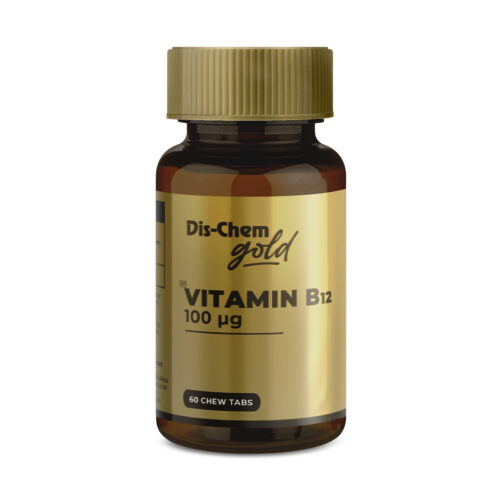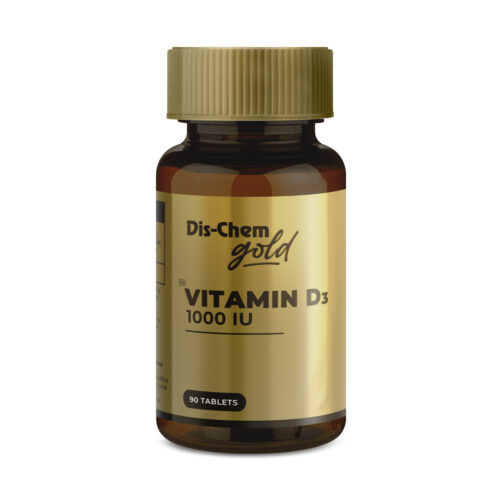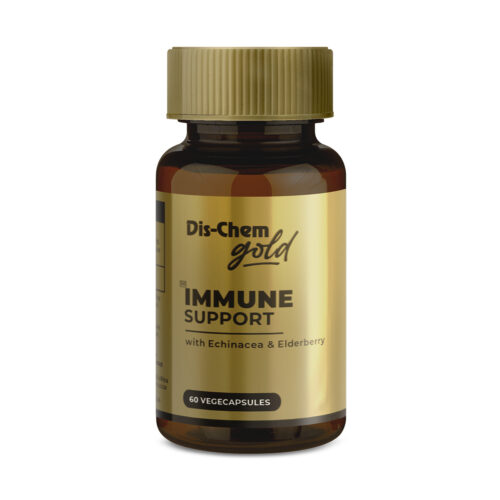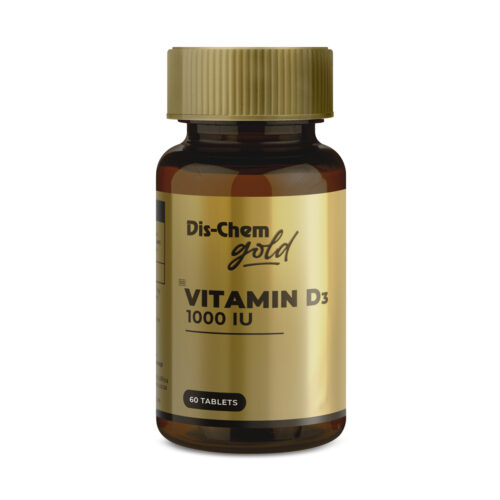Why vitamin D may be better than vitamin C at preventing and treating flu this winter
It’s winter, which inevitably means we’re all following the conventional A-B-C approach to boost immunity because prevention is better than cure, after all. That means we’re dosing up on all those antioxidant vitamins, the most prominent of which are vitamins A, B (B6 specifically) and C.
The other compounds that are often promoted for their touted immune-boosting benefits include vitamin E, zinc, selenium, folic acid, copper, beta carotene and coenzyme Q10, with various degrees of research and science backing their efficacy.
However, there is a glaring omission from most of our proactive strategies aimed at boosting our immune systems, and that is a lack of vitamin D. Yes, the so-called ‘sunshine vitamin’ is actually one of the more important substances in terms of immunity as it has the greatest link to immune function than all those already mentioned.
Unfortunately there is often a lack of this vital vitamin at a time when we generally need it most due to the shorter days and weaker ultraviolet radiation from the sun during winter. We also wrap up warmly which reduces skin exposure to the sun’s rays.
Thankfully, down in the Southern Hemisphere we only have to contend with one winter season during a calendar year, whereas those in the Northern Hemisphere have to suffer through two. They therefore experience a much greater deficiency in vitamin D levels. Regardless of this fact, it is a good idea for everyone to get more vitamin D during the flu season.
Natural production
Thankfully the body is able to produce its own supply of this important vitamin via the action of sunlight on a form of vitamin D that is contained in the skin called cholecalciferol (also known as vitamin D3). Via a two-step conversion process (the first in the liver, the second in the kidney) it is converted into the active metabolite of vitamin D known as calcitriol which acts on vitamin D receptor (VDR) sites on cells. Once this conversion takes place vitamin D becomes classed as a steroid hormone and is no longer a vitamin. In this active form vitamin D can then elicit its beneficial effects, the most important of which was is generally thought to be regulating calcium balance to maintain healthy bones.
However, if you choose to hibernate indoors during the colder months, diet-derived vitamin D is your next best option (but don’t miss an opportunity to expose your body to the sun’s rays whenever you can). The best dietary sources of vitamin D include egg yolks, beef liver, fatty fish such as tuna, herring, mackerel and salmon, and various fortified dairy and cereal products.
“170g of cooked salmon contains more than 600 IU of vitamin D.”
And due to its role in regulating calcium balance, vitamin D supplementation has also generally been advised for those who require additional assistance in maintaining bone mineral density, especially those who may follow a diet that is deficient in the foodstuffs already mentioned or suffer from vitamin D insufficiency.
No bones about it
However, a growing body of evidence now suggests that the role of vitamin D within the body has far-reaching health benefits, not merely maintaining strong bones. These range from the prevention and treatment of common cancers, hypertension and cardiovascular disease, to optimal brain development and, for the purposes of this article, its role as an immunomodulator – a chemical agent that modifies the immune response or the functioning of the immune system.
We now know that vitamin D works in the immune system by reducing levels of inflammatory proteins called cytokines. It also increases the amounts of antimicrobial proteins, which destroy invading germs and viruses, such as the B cells (also known as B lymphocytes) and killer T cells that constitute our adaptive immune system which builds immunity via immunological memory following exposure to specific antigens. These cells contain vitamin D receptors and are therefore capable of synthesising the active form of vitamin D, calcitriol. This means that vitamin D plays a vital role in modulating the adaptive immune system’s antimicrobial response to infections.
Furthermore, there is evidence to suggest that vitamin D plays an important role in our innate immunity – the immediate, non-specific immune defense system, which consists of antigen-presenting cells such as dendritic cells, and monocytes and macrophages. Our initial understanding of vitamin D’s role in innate immune function was established following studies that looked at the use of cod liver oil as a treatment for tuberculosis (TB), the first of which was conducted over 25 years ago.
In this study, active calcitriol was shown to reduce the proliferation of the bacteria that causes TB. More recent studies have better defined the way in which monocytes and macrophages respond to and kill off these TB-causing bacteria as monocytes promoted the localised activation of vitamin D as part of the body’s immune response, with the resulting calcitriol binding to vitamin D receptors. In this way, vitamin D acts to modulate gene expression in response to the immune challenge posed by TB-causing bacteria.
The real flu fighter
More generally, vitamin D has been linked to a decrease in both a person’s susceptibility to and the duration of common infections, including the flu. This statement is backed by numerous studies which tend to show that people who have lower levels of vitamin D are more likely to get the flu and also tended to suffer with the infection for longer (nine days versus just two in those with higher vitamin D levels, according to one study).
One such study, conducted in 2011, reviewed the link between vitamin D levels and respiratory infections such as influenza in a large group of British adults. The researchers found that for each 4 ng/ml increase in vitamin D levels in the body, there was a 7% lower chance of developing influenza.
More recently, in 2015, scientists from the Department of International Health, Immunology and Microbiology at the University of Copenhagen determined that vitamin D is crucial to activating our immune defenses by triggering the transformation of inactive immune cells into active specialised killer T cells that are capable of detecting, reacting to and fighting off bacteria or viruses in the body as part of an optimally-functioning adaptive immune system. The research team found that without sufficient circulating vitamin D the immune cells would remain dormant.
In another study, this time conducted on elderly African-American women in the United States, researchers found that the group who received 2,000 IU of vitamin D per day following two years of receiving a dose of 800 IU per day, experienced fewer flu symptoms when compared to the group that received the placebo during the third year of the study. The researchers concluded that vitamin D supplementation may therefore prove useful in the prevention of flu, but that more research was needed to confirm this stance as there are still numerous questions that need to answered.
One such question is the ideal form of vitamin D supplementation as it is unclear whether vitamin D, vitamin D2 or vitamin D3 have particular advantages. There are also few definitive studies that are able to shed light on the optimal daily dosage and form of vitamin D in supplemental form. However, there is one prominent study often cited in literature on the importance of vitamin D in immunomodulation which was conducted by Japanese researchers on 340 school children during the height of the winter flu season in the country. In the randomised controlled trial, half of the study participants were given pills that contained 1,200 IU of vitamin D3 while the other half received a placebo. Researchers found that type A influenza rates were just 10.8% in the vitamin D3 group, compared to 18.6% in the placebo group.
In an effort to help establish a healthy recommendation for daily vitamin D and calcium supplement intake, the US-based Institute of Medicine, an independent, non-profit NGO, published the findings of a study the organisation conducted in 2010, which stated that although no adverse side-effects had been reported for doses of supplemental vitamin D up to 10,000 IU/day, a safe upper limit of 4,000 IU/day was preferable. There is also research, published by Grassroots Health from the D*Action study, that shows the average adult requires up to 8,000 IU of vitamin D per day to elevate circulating serum level above 40 ng/ml, which the organisation believes is the minimum requirement for disease prevention. The recommendations for vitamin D vary greatly and should be determined on an individualised basis in consultation with a healthcare practitioner.
However, with the appropriate diet and sufficient, safe exposure to direct sunlight each day, your body should already be better able to fend off those nasty flu bugs this winter. So before you reach for another dose of vitamin C, consider heading outdoors for some exercise and a some natural vitamin D production. It won’t cost you anything!
Vitamin C is better as a cure than a prevention
The reason why megadoses of vitamin C are often advised during the cold and flu season is that this antioxidant is highly concentrated in immune cells and is consumed quickly during an infection. However, the use of vitamin C as a preventative measure has been questioned recently, with a meta-analysis that examined 29 trials in a total of 11,306 participants revealing that supplementing with 200mg or more of vitamin C did not reduce the frequency of colds and infection. However, there was a tendency for vitamin C to reduce the severity and duration of colds. That means you’re better off saving your vitamin C supplement for when you get sick, rather than trying to boost your immunity with it.
“A study comprised of healthy adults found that people with lower levels of vitamin D were twice as likely to develop influenza, compared to people with high levels of vitamin D.”
Tips to boost vitamin D levels:
- Expose as much of your skin as possible to the sun’s ultraviolet rays for a few minutes each day. Optimal durations vary depending on skin type.
- Get this ultraviolet exposure as near to solar noon as possible – generally between 10h00 and 14h00.
- If you use a sunscreen, opt for one that blocks only UVA.
- Add more vitamin D-rich foods to your daily diet.
- Supplement with vitamin D2 or D3, if additional support is required.









